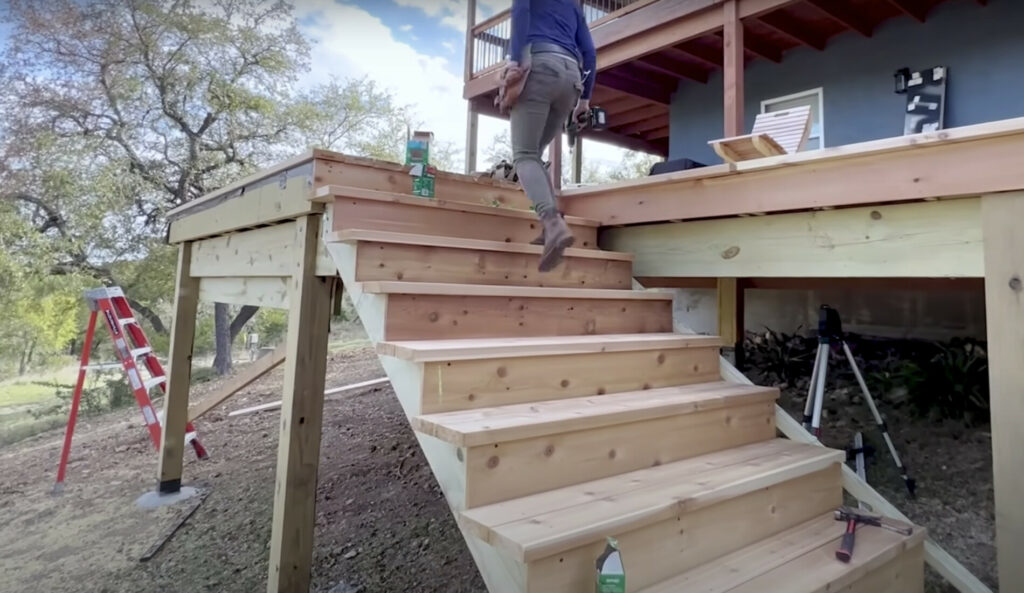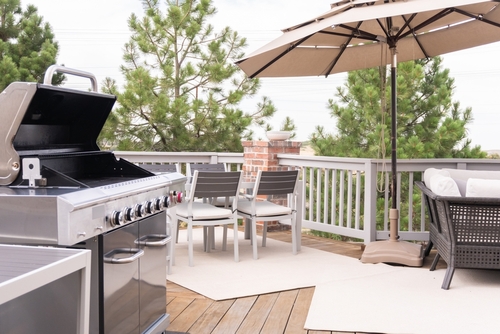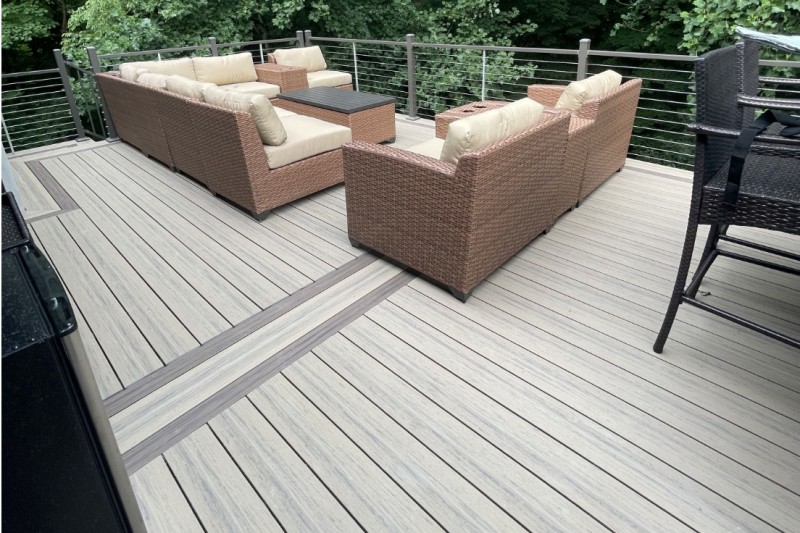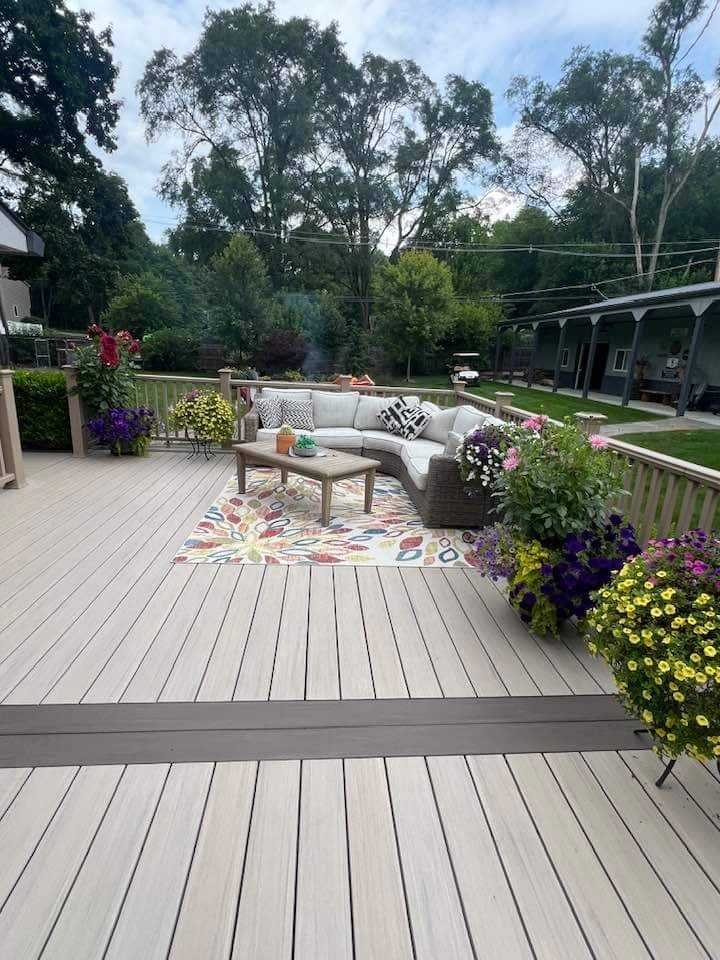Important Deck Safety Tips Everyone Should Know
A deck can be a wonderful addition to any home, providing a comfortable outdoor space for relaxing, entertaining, and enjoying the fresh air. However, like any part of your home, a deck requires regular maintenance and attention to ensure it remains safe and functional for years to come. Neglecting deck safety can lead to serious accidents, injuries, and costly repairs. Here, we’ll cover important deck safety tips that every homeowner should know to keep their deck in top condition and their loved ones safe.
Regular Deck Inspections
One of the most critical aspects of deck safety is conducting regular inspections to identify potential hazards or signs of wear and tear. At least once a year, thoroughly inspect your deck for any of the following issues:
- Loose, missing, or protruding hardware
- Cracks, splits, or decay in deck boards or structural components
- Wobbly or unstable railings, posts, or stairs
- Sinking or heaving of the deck foundation
- Excessive mold, mildew, or rot
- Insect damage or infestation
If you notice any of these problems, address them promptly to prevent further damage and ensure your deck remains safe and stable.
Proper Deck Maintenance
Regular maintenance is essential to keep your deck safe, functional, and looking its best. Some key deck maintenance:
Cleaning: Regularly sweep your deck to remove debris and clean it annually with a mild detergent and soft-bristled brush to remove dirt and stains. Avoid using harsh chemicals, which can damage your deck’s surface.
Sealing: For wooden decks, apply a high-quality sealer or stain every 1-2 years to protect the wood from moisture, UV damage, and general wear and tear. Be sure to choose a product specifically designed for your type of decking material and follow the manufacturer’s application instructions.
Repairs: Promptly address any loose, damaged, or missing deck components, such as hardware, boards, railings, or stairs. Neglecting small repairs can lead to more significant and costly damage over time.
Vegetation : Trim any overhanging trees or shrubs near your deck to prevent debris buildup and moisture retention. Be sure to also remove any plants or vines growing on or around your deck, as they can trap moisture and cause damage.

By staying on top of regular deck maintenance, you can extend the lifespan of your deck and ensure it remains safe and enjoyable for years to come.
Safe Deck Railings
Deck railings serve a critical safety function, preventing falls and providing stability for people moving around the deck. To ensure your deck railings are safe and compliant with building codes, consider the following:
Height: Deck railings should be at least 36 inches tall.
Spacing: Railing balusters or pickets should be spaced no more than 4 inches apart to prevent small children from getting stuck or falling through. Horizontal cable railings should be spaced no more than 3 inches apart.
Strength: Railings should be securely attached to the deck’s frame and able to withstand a minimum of 200 pounds of pressure applied in any direction. Regularly check railing stability and promptly address any loose or wobbly sections.
Material Condition: Inspect railing materials for signs of damage, decay, or corrosion, and make necessary repairs or replacements to maintain structural integrity.
Stair railings: with three or more steps are to have a graspable rail (ADA rail) on at least one side.

If your deck railings don’t meet these safety standards, consider upgrading them to ensure the safety of your family and guests.
Safe Deck Stairs
Deck stairs are another common site of accidents and injuries, particularly when they’re steep, narrow, or lacking proper handrails. To ensure your deck stairs are safe and user-friendly, follow these guidelines:
Dimensions: Stairs should be at least 48 inches wide with a minimum tread depth of 10 inches and a maximum riser height of 7 3/4 inches. Consistency in riser height and tread depth is key to prevent tripping hazards.
Handrails: Provide sturdy handrails on both sides of the stairs, ideally between 36 and 42 inches high. Handrails should be graspable and extend the full length of the stairs.
Lighting: Ensure stairs are well-lit for nighttime use, with light fixtures installed at the top and bottom of the stairway and along the handrails if possible.
Maintenance: Regularly inspect stairs for signs of wear, damage, or instability, and make prompt repairs as needed. Keep stairs clear of debris and slip hazards, and apply non-slip treatments if necessary.
Stairs: stringers shouldn’t be greater than 12” apart and should be properly fastened to the deck frame

By designing and maintaining your deck stairs with safety in mind, you can prevent falls and ensure easy, comfortable access to your deck.
Grilling and Fire Safety
Grilling and outdoor cooking are popular activities on decks, but they also pose significant fire risks if not done safely. To prevent deck fires and ensure safe grilling practices, follow these tips:
Grill Placement: Place your grill at least 10 feet away from your home, deck railings, and any overhanging branches or structures. Never under a covered porch or deck.
Fuel Management: Keep propane tanks or charcoal bags stored safely away from the grill and any heat sources. Regularly check propane tanks and connections for leaks or damage.
Fire Suppression: Keep a fire extinguisher or bucket of water nearby when grilling, and know how to use them in case of a flare-up or fire.
Grill Maintenance: Regularly clean your grill grates and drip trays to prevent grease buildup and fire hazards. Inspect your grill for any damage or wear before each use.
Supervision: Never leave a lit grill unattended, and keep children and pets safely away from the grilling area.

Deck Load and Usage
In addition to respecting your deck’s weight capacity and occupancy limits, it’s important to be mindful of how you use and load your deck to prevent safety hazards. Some key considerations include:
Furniture Placement: Arrange deck furniture to allow for clear paths of movement and avoid overcrowding.
Snow and Ice: In colder climates, promptly remove snow and ice buildup from your deck to prevent structural damage and slipping hazards. Use a broom or plastic shovel to avoid damaging the deck surface.
Planters and Landscaping: Be mindful of the weight of large planters, soil, and plants on your deck, and distribute them evenly to avoid overloading any one area. Ensure proper drainage to prevent water damage and slipping hazards.
Storage: Avoid using your deck for long-term storage of heavy items like firewood, building materials, or equipment. These items can add excessive weight and moisture to your deck, leading to structural damage and safety hazards.
Hot Tubs: Before installing a hot tub, check with an engineer or deck builder that your deck can properly support the weight of a hot tub and its capacity.
Covered Structures: With the weight of a screened porch or covered porch be sure if you plan to build or already have that your deck is properly built to support the structure.
By being thoughtful and proactive about how you use and load your deck, you can prevent accidents and ensure your deck remains safe and functional.
Conclusion
A safe and well-maintained deck can provide years of outdoor enjoyment and relaxation for you and your loved ones. By prioritizing regular inspections, maintenance, and safety best practices, you can ensure your deck remains structurally sound, visually appealing, and hazard-free.
Remember to conduct annual inspections, address repairs promptly, and follow safe practices. If you’re ever unsure about the safety or integrity of your deck, don’t hesitate to consult with a professional deck inspector, contractor, or your local building department for expert guidance and support. With proper care and attention, your deck can be a beloved and lasting feature of your home for generations to come.











